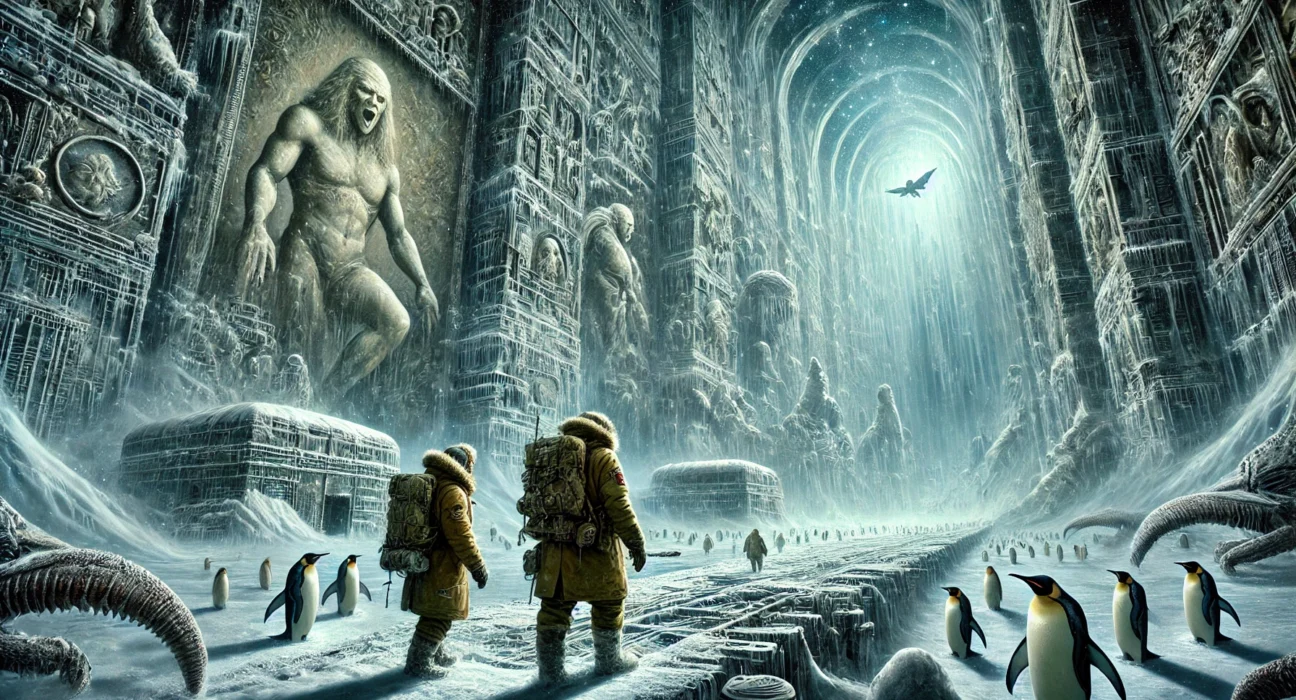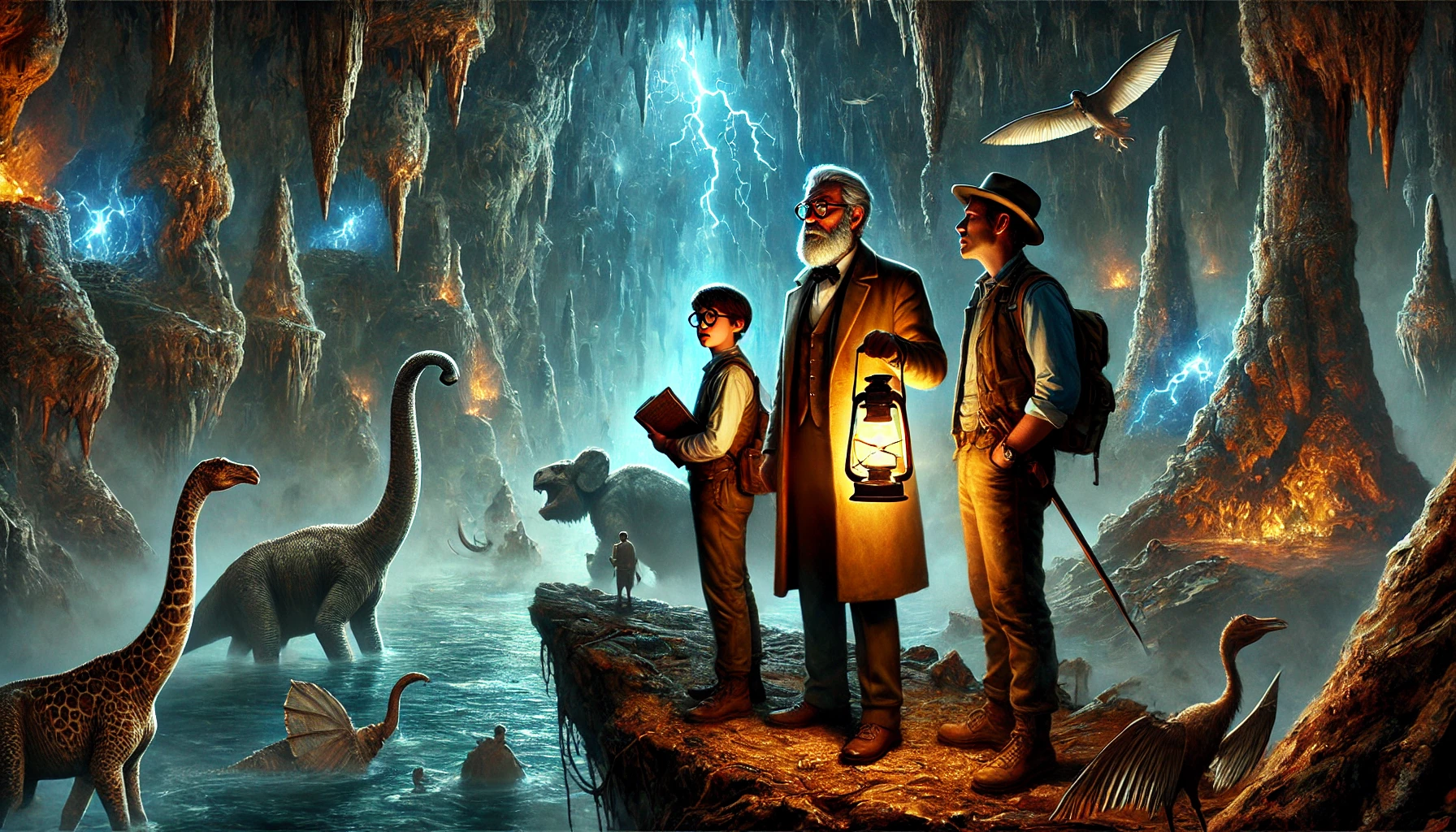“At the Mountains of Madness,” written by H.P. Lovecraft, is a seminal work in the genre of cosmic horror, first published in 1936. The novella is a first-person account of an Antarctic expedition led by geologist William Dyer from Miskatonic University. The narrative blends scientific exploration with the supernatural, revealing ancient, unspeakable horrors buried within the icy continent. The story is a stark reminder of humanity’s insignificance in the face of the vast, unknown cosmos, a recurring theme in Lovecraft’s work.
Comprehensive Plot Summary
The Miskatonic University Expedition set forth into the icy wilderness of Antarctica, driven by scientific curiosity and the promise of unraveling the secrets buried beneath the ancient ice. Led by William Dyer, a seasoned geologist, the team comprised of scientists, graduate students, and skilled mechanics, armed with advanced drilling equipment and the ambition to explore the continent’s deepest geological layers. The vast, uncharted expanse of ice and rock, where nature had long kept its secrets sealed, called to them with the promise of discoveries that could change their understanding of Earth’s history.
Their journey began with relative ease, the initial stages marked by the collection of fossils and geological samples that hinted at a time when the continent had been lush and warm, a stark contrast to its current frozen desolation. Excitement grew as they unearthed evidence of ancient plant and animal life, some specimens hinting at a world that predated known history. However, their greatest discovery awaited them in the northwest, where Professor Lake led a sub-expedition. He had detected something extraordinary in the readings—mountains taller than the Himalayas, towering and dark, their peaks barren of snow.
Lake’s team set out with fervor, their journey pushing them into uncharted territory. The mountains loomed ahead, a foreboding sight against the Antarctic sky, their blackened, snowless peaks defying the surrounding whiteness. Upon reaching the base of this mountain range, they began their drilling, driven by the strange fossils they had already discovered—fossils with triangular markings that defied explanation. The deeper they drilled, the more they unearthed, until they uncovered a cavern within the mountain, a cavern filled with barrel-shaped entities encased in ice.
The creatures were unlike anything they had ever seen or imagined, and certainly unlike anything known to science. These entities, with their peculiar starfish-like heads, fivefold symmetry, and intricate appendages, seemed to belong to both plant and animal kingdoms. Lake, enthralled by the discovery, meticulously documented each detail, sending back frantic reports that spoke of an advanced form of life. He dubbed them the “Elder Things,” suggesting they were survivors or remnants of an ancient civilization that existed long before humanity.
As Lake’s team ventured further into the cavern, the discoveries grew stranger and more unsettling. They found not only the bodies of these creatures but also remnants of their civilization—tools, murals, and artifacts that suggested a highly advanced society. The murals depicted the rise of the Elder Things, their arrival on Earth from the stars, and their establishment of a thriving civilization in the primordial oceans. They had created other life forms to serve them, including the monstrous, shape-shifting shoggoths, which eventually turned on their creators.
Then, abruptly, all communication with Lake’s camp ceased. Silence fell over the radio waves, leaving the main expedition team in a state of growing anxiety. Dyer, alongside Danforth and others, resolved to investigate the cause of this ominous silence. They flew to Lake’s last reported location, finding a scene of unspeakable horror. The camp was in ruins, tents torn apart, and the bodies of Lake’s team lay mutilated, their expressions twisted in terror. The specimens, the strange beings that Lake had so eagerly studied, were missing.
Dyer and Danforth, now grappling with the reality of what Lake’s team had unearthed, ventured cautiously into the city hidden within the mountains. The city, an alien landscape of cyclopean structures and eldritch architecture, revealed itself as an eerie testament to the Elder Things’ civilization. Towering spires and labyrinthine corridors spoke of an ancient era when these beings had ruled the Earth, their dominance extending into realms beyond human understanding. The murals on the city walls narrated a history of cosmic horror—the Elder Things’ wars with other beings from the stars, their creation of the shoggoths, and the eventual downfall of their empire.
As they traversed the city’s dark passageways, they encountered signs of life in the form of giant, blind albino penguins, their unnatural presence adding to the city’s unsettling atmosphere. But more terrifying were the indications that the shoggoths still roamed these ancient halls. These formless, protoplasmic entities, capable of imitating and absorbing anything they encountered, had been the downfall of the Elder Things. In their unbridled adaptability and strength, they had overthrown their masters, leading to the collapse of the ancient civilization.
The final realization of the true horror that lay beneath the ice came when Dyer and Danforth narrowly escaped an encounter with one of these shoggoths. The sight of the creature, a mass of ever-changing, amorphous flesh, its body echoing with the cries of the beings it had consumed, drove home the terrifying reality of what had been unearthed. These entities were not just relics of a bygone era; they were still alive, lurking in the shadows of the ancient city.
Traumatized by their discoveries, Dyer and Danforth made a desperate escape back to the surface. Danforth, who glimpsed something even more horrifying during their flight out, suffered a breakdown, his mind unable to process the eldritch visions he had seen. Dyer, too, was deeply shaken, but he knew he had to warn the world. The secrets they had uncovered, the truths that lay buried beneath the ice, were too dangerous to be explored further. He recounted the expedition’s story not to glorify their discoveries, but to serve as a dire warning against future explorations of the region.
In the end, the Miskatonic University Expedition’s journey is one of discovery turned to horror, a tale of mankind’s insatiable quest for knowledge leading them to the brink of madness. The ancient city, with its alien architecture and cosmic secrets, stands as a monument to the Elder Things and a testament to the terrifying forces that exist beyond human comprehension. Dyer’s warning echoes with the gravity of one who has seen the true face of the unknown: some mysteries are better left undisturbed, for the sake of humanity’s fragile sanity.
Main Characters
William Dyer – The protagonist and narrator, a geologist from Miskatonic University who leads the expedition. Dyer’s knowledge and experience are central to the unfolding of the narrative, and his ultimate goal is to prevent others from repeating the same mistakes.
Professor Lake – A biologist whose insatiable curiosity leads to the discovery of the Elder Things. Lake’s meticulous scientific approach contrasts with the horrific outcomes of his exploration.
Danforth – A graduate student who accompanies Dyer on the final exploration of the ancient city. Danforth’s experience and subsequent breakdown highlight the psychological impact of their discoveries.
Themes and Motifs
Cosmic Horror – The central theme of the novella, emphasizing humanity’s insignificance in the vast, indifferent universe. The ancient beings and their advanced civilization serve as a reminder of forces beyond human comprehension.
Forbidden Knowledge – The quest for understanding leads the explorers to uncover truths that challenge their sanity. The narrative warns of the dangers inherent in delving too deeply into the unknown.
Isolation and Madness – The harsh, remote setting of Antarctica amplifies the characters’ sense of isolation. The psychological toll of their discoveries is a recurring motif, culminating in Danforth’s breakdown.
Science vs. Supernatural – The story juxtaposes scientific exploration with supernatural elements. The scientists’ rational approach is constantly challenged by the inexplicable phenomena they encounter.
Writing Style and Tone
Lovecraft’s writing style in “At the Mountains of Madness” is characterized by meticulous detail and a formal, antiquated tone. His use of dense, descriptive passages creates an immersive atmosphere, drawing readers into the eerie, desolate landscape of Antarctica. Lovecraft’s narrative technique involves a gradual buildup of tension, revealing horrors incrementally to maintain a sense of dread.
The tone is one of cosmic pessimism, reflecting Lovecraft’s belief in humanity’s insignificance. The prose often evokes a sense of awe and terror, underscoring the existential themes that permeate the story. Lovecraft’s linguistic choices, including his use of scientific terminology and mythological references, lend an air of authenticity to the narrative, enhancing its impact on the reader.
We hope that this summary has sparked your interest and would appreciate you subscribing to our newsletter.
There’s a treasure trove of other fascinating book summaries waiting for you. Check out our collection of stories that inspire, thrill, and provoke thought, just like this one by clicking here.
Remember, while our summaries capture the essence, they can never replace the full experience of reading the book. If this summary intrigued you, consider diving into the complete story – buy the book and immerse yourself in the author’s original work.
If you want to request a book summary, click here.
When Saurabh is not working/watching movies/reading books/traveling, you can reach him via Twitter/X, or LinkedIn.
Restart reading!






